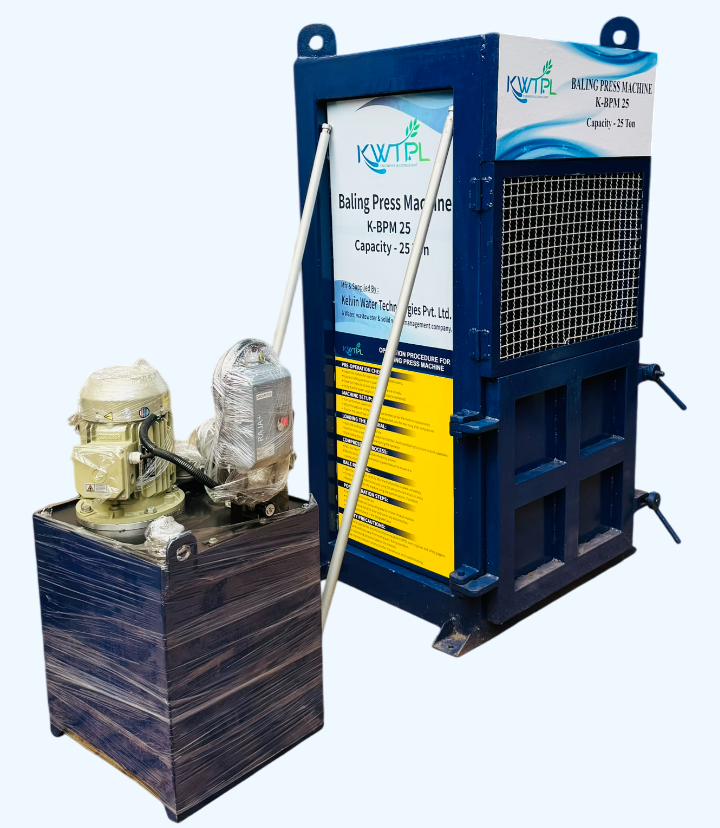Industrial and commercial sectors generate massive quantities of waste materials every day. Whether it is plastic, cardboard, paper, metal scrap, cotton, fabric, or agricultural residues, managing bulk waste efficiently is a major challenge. To solve this, industries rely on a powerful machine called the Baling Press Machine—an advanced system designed to compress loose waste into compact, manageable bales. These bales are easier to store, transport, recycle, and reuse, benefiting industries and the environment alike.
A baling press machine has become an essential piece of equipment in recycling centers, scrap yards, warehouses, manufacturing plants, packaging units, textile industries, and various commercial sectors. It improves waste handling efficiency, reduces storage space, minimizes transportation cost, and supports sustainable waste management practices.
What Is a Baling Press Machine?
A Baling Press Machine is a mechanical equipment used to compress and bundle waste materials into compact bales using hydraulic pressure. The primary purpose of this machine is to reduce the volume of waste, making it easier and more economical to handle.
It works by applying hydraulic force that squeezes waste material inside a chamber. Once compressed, the machine binds the compacted block with wire, straps, or ropes, creating a stable and uniform bale ready for storage or transport.
Why Baling Press Machines Are Important?
- Reduces Waste Volume
Loose waste occupies a large amount of space. Baling reduces waste volume by up to 80–90%, optimizing storage and warehouse management.
- Lowers Transportation Cost
Compact bales mean more material can be loaded in a single trip, reducing fuel and transport expenses significantly.
- Boosts Recycling Efficiency
Baled materials are easier for recycling units to handle and process, promoting eco-friendly waste disposal.
- Enhances Safety & Cleanliness
Loose waste scattered around can cause accidents and clutter. Baling ensures a clean and safe working environment.
- Supports Sustainability
Industries adopt baling press machines to meet sustainability goals and reduce environmental impact.
How Does a Baling Press Machine Work?
Although different models have different mechanisms, the basic working process is similar:
- Loading the Material
Loose waste such as plastic bottles, cardboard, scrap metal, fabric, or agricultural residue is loaded into the machine’s chamber.
- Compression
The hydraulic cylinder pushes a compression plate downward (or sideways depending on machine type) with immense pressure to compact the material.
- Binding the Bale
Once compressed, the bale is tied with metal wires, plastic straps, or ropes for stability.
- Ejection
The compact bale is automatically or manually ejected from the machine and stacked for transport or storage.
Types of Baling Press Machine
Different industries require different types of balers based on material, volume, and operational needs. Here are the most common types:
- Vertical Baling Press Machine (Stand-Alone Baler)
- Ideal for lower to medium waste volumes
- Operates vertically
- Compact, affordable, and space-saving
- Suitable for cardboard, plastics, textiles, paper, foam, and fabric
- Horizontal Baling Press Machine
- Designed for continuous and heavy-duty operations
- Higher output capacity
- Can be manual, semi-automatic, or fully automatic
- Fast, efficient, and suited for large waste volumes
- Double-Action Baling Press
- Compresses the material from two directions
- Produces denser, uniform bales
- Typically used for metal scrap
- Triple-Action Baling Press
- Compresses from three directions (side, top, and bottom)
- Creates extremely compact metal bales
- Handles tough, rigid, and bulky scrap materials
- Scrap Baling Press Machine
- Specifically designed for metal waste like steel, iron, copper, brass, and aluminium
- Highly efficient compression
- Available in hydraulic and automatic models
- Textile Baling Press Machine
- Used in garment factories, cotton mills, and textile recycling
- Compresses fabric, fibers, cotton, wool, and yarn
- Plastic Baling Press Machine
- Designed for PET bottles, HDPE/LDPE film, plastic packaging, and polymer waste
- Helps recycling units manage huge amounts of plastic waste
Key Features of a High-Quality Baling Press Machine
- Sturdy structure: Heavy-duty steel body
- High hydraulic pressure: Ensures maximum compression
- Automatic or semi-automatic operation: Reduces labour
- Safety sensors & interlocks: Prevents accidents
- Low maintenance design: For long operational life
- Energy-efficient motors: Reduced power consumption
- High bale density: Compact and uniform bales
- User-friendly control panel: Easy to operate
Applications of Baling Press Machine
Baling machines are widely used in:
- Recycling industries
- Paper mills
- Plastic processing units
- Textile manufacturing
- Supermarkets & malls
- Warehouses & logistic centres
- Metal scrap yards
- Printing & packaging industries
- E-commerce companies
- Municipal waste departments
Benefits of Using a Baling Press Machine
- Saves Space
Reduces waste volume drastically, allowing more storage capacity.
- Reduces Labor Costs
Automatic machines require minimal manpower.
- Increases Profit
Recycled bales fetch higher prices due to uniform weight and density.
- Enhances Productivity
Industries handle waste faster and more efficiently.
- Environmental Protection
Encourages recycling and reduces landfill pressure.
- Long-Term Cost Saving
Minimizes waste handling expenses and logistical costs.
Factors to Consider Before Buying a Baling Press Machine
- Type and amount of waste
- Required bale size
- Machine capacity
- Space availability
- Power consumption
- Automation level
- Maintenance needs
- Budget
Conclusion
A Baling Press Machine is one of the most important tools in modern industrial and commercial waste management. It reduces waste volume, cuts transportation costs, improves recycling efficiency, and helps maintain a clean and safe workplace. With different types available—vertical, horizontal, double-action, triple-action, textile balers, and metal balers—industries can choose the perfect machine based on their material type and production needs.
Whether in recycling centres, manufacturing units, retail chains, textile mills, or scrap yards, a baling press machine enables businesses to handle waste responsibly and cost-effectively, contributing to a cleaner, greener future.



